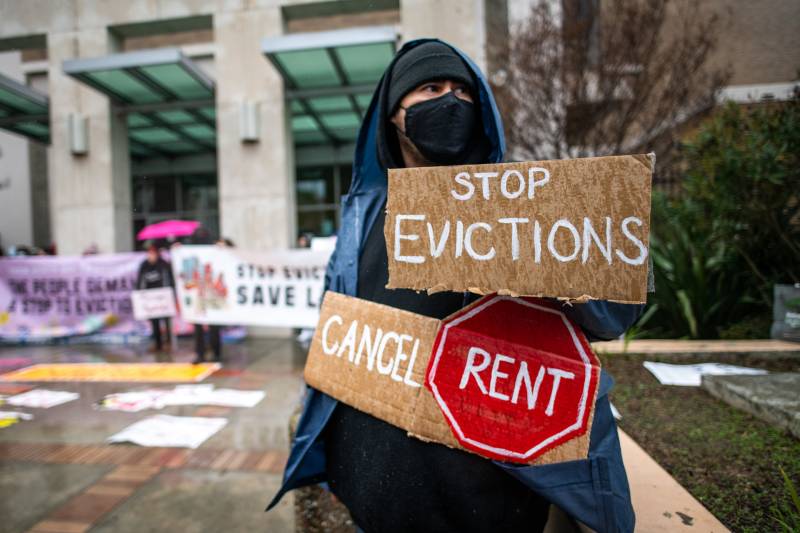“We know there’s going to be an eviction tsunami,” said Alameda County Board of Supervisors President Nate Miley, who aims to develop a program to support tenants and landlords coming out of the moratorium. He sees it as causing harm to both landlords and tenants who’ve racked up debt. “I feel the board, because we’ve put ourselves in this hole, we also have an obligation to help vulnerable populations. We need to figure out how we’re going to mitigate the damage that we’ve caused.”
In Sonoma County, where the local eviction moratorium ended in September of last year, attorney Sunny Noh of Legal Aid of Sonoma County said that surge of evictions never came.
“We expected kind of a tidal wave of cases, and that’s not what we saw,” Noh said. Instead, she said they’ve seen a gradual increase, which they expect will ultimately top pre-pandemic eviction numbers.
The moratorium reduced evictions by two-thirds compared to pre-pandemic numbers, said Margaret DeMatteo, housing policy attorney for Legal Aid of Sonoma County.
According to DeMatteo’s analysis of court data, in 2019, there were 932 unlawful detainers in the county. In 2021, the only full year covered by the moratorium, the figure dropped to 332. In 2022, with the moratorium in effect through September, numbers rebounded to 786. The figures don’t account for illegal evictions or notices that lead people to move before an eviction goes to court.
“That’s our workforce. Those are vulnerable populations,” she said. “My takeaway is that the county has a lot of power to stabilize the community and improve the ability for our workforce to remain and our seniors and people with disabilities.”
Leaders in Alameda and San Francisco counties are weighing their options to lessen the blow of losing eviction protections for tenants, but it hasn’t come without pushback.
San Leandro City Councilmember Celina Reynes’ recent proposal to extend the city’s eviction moratorium was met with a threat, wishing for her to have a miscarriage and get hit by a car, according to a social media post she shared with KQED. But last week city leaders backed her plan, shielding renters affected by COVID from evictions through February 2024. Tenants must be able to prove that their inability to pay is due to the pandemic to qualify.
“It’s a very narrow ordinance, but what it’s doing is protecting some of our residents who are most vulnerable to displacement and homelessness,” Reynes said, noting the city doesn’t have rent stabilization or just cause eviction protections in place. “It gives us time to work on more permanent solutions for both tenants and housing providers in our city.”

